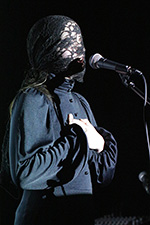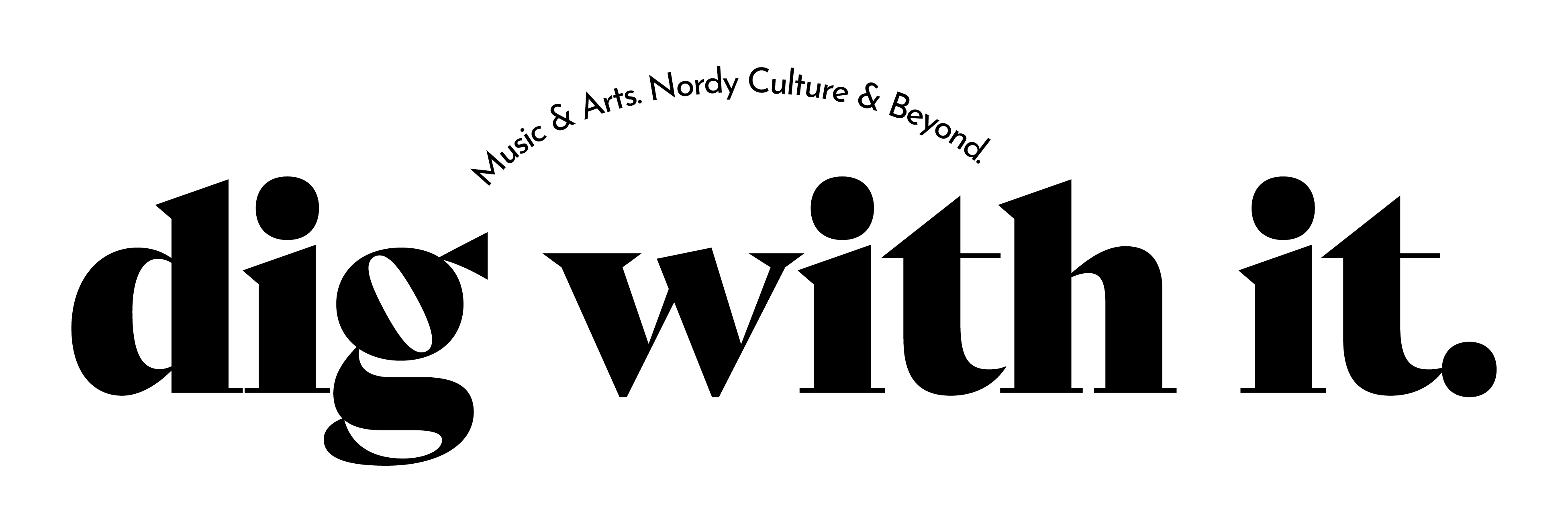 Grá mór to RÓIS and her album Mo Léan. This hidden story of the Irish keening tradition has become a shared fascination. She has liberated voices, long silenced by Church, State and Empire. A wonderful coup.
Grá mór to RÓIS and her album Mo Léan. This hidden story of the Irish keening tradition has become a shared fascination. She has liberated voices, long silenced by Church, State and Empire. A wonderful coup.
Last week, there were two distinctions for RÓIS at the RTÉ Radio 1 Folk Awards – Best Original Folk Track for ‘Caoine’ and Best Emerging Artist. The week before that, she was saluted at the Gradaim Nós event in Belfast. And now this week, the album is shortlisted in the Choice Music Prize, alongside peers like Fontaines DC, Kneecap and New Dad. Might there be an outlier victory that upsets the bookies?
“Well I’m up against the Fontaines,” says RÓIS, laughing, “so I’m not expecting anything at all. But it’s just great to have a night out with family. I wasn’t expecting anything in the Folk Awards now, either, but sure…”

RÓIS. Photo by Stuart Bailie
There was an excellent moment during last Saturday’s RTÉ programming when RÓIS finished up the Tommy Tiernan Show and then reappeared, minutes later, in the TV transmission of the Folk Awards. It was like radical marketing, repeated glimpses of an artist wailing out of the darkness with a black veil on her head. You could hardly miss it. A good feeling, surely?
“It’s very satisfying. It’s a good time in Ireland to be bringing back keening – and as a woman as well. And it’s a nice mixture between experimental and not-so experimental.”
RÓIS says she doesn’t have a speech ready for the awards. She’s not presuming anything. When she was awarded her second RTÉ award, she was actually back in the balcony, unaware of what was happening. She almost missed receiving her trophy from Mary Chapin Carpenter, to the amusement of the Vicar Street audience. “I’d be late for my own funeral,” she told them, when she finally reached the stage, impeccably dressed in black.
I suggest that for her potential Choice Prize acceptance speech, RÓIS could resurrect the Father Ted moment at the Golden Cleric Awards. A good time to settle scores. She thinks this might be a fun idea.
“I know that speech very well. Off by heart. ‘And now, we move on to liars…’”

RÓIS. Photo by Stuart Bailie
RÓIS, aka Rose Connolly, is from Newtownbutler in Fermanagh. She was raised in a music family, alive to trad music. She played the whistle, fiddle, banjo, piano, flute and mandolin. As a teenager, she liked Nirvana. “I was obsessed by Kurt Cobain. I was one of those angsty teenagers. I played ‘Stay Away’ in the bedroom constantly. I was very inspired by that expressive Nirvana feeling.” Hence her magnificent version of ‘Something in the Way’ that RÓIS fetched up last December, during her performance at the Black Box.
In 2018 she attended the Royal Irish Academy of Music, sometimes working against the formal constraints. She took an Erasmus visit to the Royal Conservatoire of the Hague. She listened to Meredith Monk, Hatis Noit and Alice Coltrane – some of which was evident on her debut album, Uisce Agus Bean, which combined the avant-garde with Irish trad and mythical themes.
The story of keening is sketchy and lightly documented. It was frowned on as a pagan legacy, and outlawed by the church. Much of this Irish tradition had vanished before the folk collectors arrived. Only scraps remain, like the voice of Cití Ní Ghallchóir, recorded by Alan Lomax in in Donegal, 1951, remembering a lament for a dead child.
I ask RÓIS if her work has parallels with the writing of Manchán Magan, who is drilling down into Irish language and culture, seeking the pre-Christian significance and linking it to the Indo-European trail. Manchán appeared on the Kneecap album, a cameo part as a rogue druid. But there are other voices out there, like Huartan, who venerate the hawthorn tree and strive to de-colonise their heads. All over, there are masks and sedition. A fascinating time.
“I think there’s a bit of a zeitgeist,” says RÓIS. “A resurgence, some sort of celebration. Pagan just means countryside, so I suppose it is a sort of a country-ness, a sort of a wildness, that we want to go back to. It’s been cleaned and sterilised by the likes of the Catholic Church and colonisation.
“There was too much order. And I think there has to be a balance of order and chaos, and I think we’re going back to the chaos. I think keening really suits me. And it’s no coincidence that it’s keening. We only have three recordings of the last keening women, and there’s a lot of hypothesis.
“What I think, and what other academic research says, is that before Christianity, keening would have been very experimental. It would have been so unique and individual to the keener. Like, the keening women used it for their own grievances on the village, or used it as a call to arms. And they tried to banish the priests that were there, doing wrong. And then of course, the priests then won, and banned them. In the end, we lost that tradition.”
When you watch RÓIS on stage, it’s seems like the music is being channelled. She has clearly found a medium that suits her.
“I love screaming. Not as art, just as a way to figure out my own emotions. Just to get that scaoil amach, that relief. It just suits my kind of thing. And I like that archetype of the wild woman (the hag, the sentainne, the cailleach) I think we should stop saying that it’s coming back because Growler (Dee Mulrooney), Manchán Magan, The Wild Geeze, the comedians, Julie Goo and all these people are bringing it all back.”
Was RÓIS confident that Mo Léan (my woe) was a significant record when she was finishing it?
“I remember starting it last year, and it just seemed wholesome and holistic. It was coming full circle. The stuff that I’m interested in is culture, a bit political, and putting a new spin on the tradition. It’s what I’m all about. I wanted the ‘Feel Love’ track to feel like a celebration. I don’t want RÓIS to be this doom and gloom, scary mask thing. I want it to be like a dance party and fun because that’s what life is about too, and that’s what they used to celebrate. It wasn’t just all sad. I think we’ve actually gone too far…over to sad.”

RÓIS. Photo by Stuart Bailie
Several of the speeches during the RTÉ Radio 1 Folk Awards, particularly in relation to the pioneer spirit of Dónal Lunny, stressed that the tradition was there to be respected, but that it was also fit for experiment. It was a reminder that some of the best practitioners have been mavericks. Like Seán Ó Riada, bringing the European classical canon to the music, or more recently Úna Monaghan, using AI to write weird airs. RÓIS agrees.
“Yeah, it’s great to know who you are as an artist. You always have to be very aware of your authenticity – what you believe in, and who you are, and it’s really important to know where you came from. Folk and sean-nós speaks to me, because I’m very connected to the land in Fermanagh and my musical upbringing was all traditional music.
“When I was about seven, I started getting into classical and jazz and all that, but it was always trad that was the main thing. It’s exploring that history and where it comes from… and the songs that would have been in the household. So yeah, knowing where you’re come from and where you’re going to. That anachronistic exploration is what I’m interested in.”
In the past, people sometimes said that Sinéad O’Connor was keening in her music, particularly on songs like ‘Jackie’, which was likely inspired by the keening mother at the end of the JM Synge play, Riders to the Sea. If so, you wonder if Sinéad had made a study of the form, or rather, that she pulled it out of some mythical race memory?
“She was so intuitive though. I think it’s like being in the moment – intuition, like. Maybe there is some sort of zeitgeist, the keening women in us. But I think it’s just being human and so was just so real and raw. That was her.”
The wearing of the mask is goes back to Irish traditions like the wren boys and the rhymers. Oscar Wilde famously noted that, “Man is least himself when he talks in his own person. Give him a mask, and he will tell you the truth.” (The Critic as Artist, 1891). WB Yeats was fascinated by Japanese noh theatre and wrote up his Doctrine of the Mask, which pervaded much of his work. More recently, Blindboy Boatclub has said that wearing a shopping bag on his head aids his neurodivergent personality. It gives him anonymity and an escape from a neurotypical world. How does the RÓIS method fit with all this?
 “My first love for music was Daft Punk. And Daft Punk obviously had the masks on. I remember my brothers were very influenced by that, and how mysterious that was. For me, it’s that anonymity. For the first year of gigging in Belfast, I wasn’t really sticking to it that much. But now I’ve won an award, I’m gonna definitely stick to it. It’s really great for performing it. You can really let go. You can express yourself more freely with the mask on.”
“My first love for music was Daft Punk. And Daft Punk obviously had the masks on. I remember my brothers were very influenced by that, and how mysterious that was. For me, it’s that anonymity. For the first year of gigging in Belfast, I wasn’t really sticking to it that much. But now I’ve won an award, I’m gonna definitely stick to it. It’s really great for performing it. You can really let go. You can express yourself more freely with the mask on.”
Upcoming plans for the artist include a possible collaboration with David Holmes plus a second keening album, this time with The Crash Ensemble. This latter project will be an elegy for rural Ireland, partly inspired by a John Healy book, The Death of an Irish Town (1967). “He writes about how emigration has been described as ‘outward social mobility’. He describes it as a ‘dead corpse’ – the spasms when people leave, it’s already dead. I was very inspired by that.”
RÓIS pauses.
“And then I’m gonna wrote my own album next. It never stops.”
That’s many achievements in a short timeframe…
“Jeeez, I need to take a break now.”
Stuart Bailie







 Twitter
Twitter